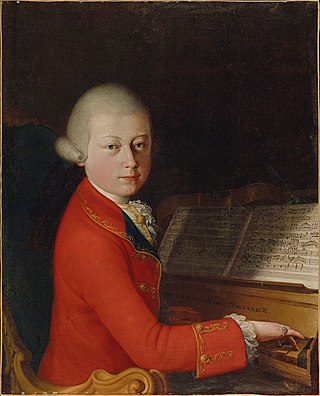The Gifted & Talented series is a book series that has sold more than one million copies. It contained books for children and their parents. The first title in the series was Science Questions & Answers: The Human Body.
The Gifted & Talented series is a book series that has sold more than one million copies. It contained books for children and their parents. The first title in the series was Science Questions & Answers: The Human Body.
The series was originally published by Lowell House and subsequently by McGraw-Hill/Contemporary. The series was created for Lowell House in 1987 by Susan Amerikaner. It was the first series to use thinking skills in appropriate ways for young children. Many of the original titles are out of print. The series is now distributed by School Specialty Company.

A child prodigy is defined in psychology research literature as a person under the age of ten who produces meaningful output in some domain at the level of an adult expert. The term is also applied more broadly to young people who are extraordinarily talented in some field.
Intellectual giftedness is an intellectual ability significantly higher than average. It is a characteristic of children, variously defined, that motivates differences in school programming. It is thought to persist as a trait into adult life, with various consequences studied in longitudinal studies of giftedness over the last century. There is no generally agreed definition of giftedness for either children or adults, but most school placement decisions and most longitudinal studies over the course of individual lives have followed people with IQs in the top 2.5 percent of the population—that is, IQs above 130. Definitions of giftedness also vary across cultures.
Gifted education is a sort of education used for children who have been identified as gifted and talented.
Julian Cecil Stanley was an American psychologist. He was an advocate of accelerated education for academically gifted children. He founded the Johns Hopkins University Center for Talented Youth (CTY), as well as a related research project, the Study of Mathematically Precocious Youth (SMPY), whose work has, since 1980, been supplemented by the Julian C. Stanley Study of Exceptional Talent (SET), which provides academic assistance to gifted children. Stanley was also widely known for his classic book, coauthored with Donald Campbell, on the design of educational and psychological research - Experimental and Quasi-experimental Designs for Research.

The School for the Talented and Gifted at the Yvonne A. Ewell Townview Magnet Center is a public college preparatory magnet secondary school located in the Oak Cliff area of Dallas, Texas. The school enrolls students in grades 9-12 and is a part of the Dallas Independent School District. It is known for its liberal arts, Advanced Placement Program and intensive education style. In 2006, 2007, 2009, and 2010 Newsweek named the school the #1 public high school in the United States. In 2012, 2013, 2014, 2015 and 2016, U.S. News & World Report named TAG the #1 public high school in the United States.
The School and College Ability Test (SCAT), is a standardized test conducted in the United States that measures math and verbal reasoning abilities in gifted children.
Center for Talent Development (CTD), established in 1982, is a direct service and research center in the field of gifted education and talent development based at Northwestern University.

Reader Rabbit is an educational game franchise created in 1984 by The Learning Company. The series is aimed at children from infancy to the age of nine. In 1998, a spiritual successor series called The ClueFinders was released for older students aged seven to twelve.

Russell Ginns is a game designer, writer, and composer, primarily known for children's fiction, puzzles, and educational games and songs. He is the author of more than 100 books, including Super Atomic Wombat Girl, Puzzlooies, 1-2-3 Scream! and the Samantha Spinner series. He has created or contributed to several notable software titles, including Castle Infinity, Hooked on Phonics, Reader Rabbit and Half-Life.
The Gifted Rating Scale (GRS) is a scholastic assessment for school children. It is used mostly for Gifted & Talented admissions. It is administered by a teacher who knows the child well. The teacher rates specific gifted behaviors that they have observed over time.
Singapore math is a teaching method based on the national mathematics curriculum used for first through sixth grade in Singaporean schools. The term was coined in the United States to describe an approach originally developed in Singapore to teach students to learn and master fewer mathematical concepts at greater detail as well as having them learn these concepts using a three-step learning process: concrete, pictorial, and abstract. In the concrete step, students engage in hands-on learning experiences using physical objects which can be everyday items such as paper clips, toy blocks or math manipulates such as counting bears, link cubes and fraction discs. This is followed by drawing pictorial representations of mathematical concepts. Students then solve mathematical problems in an abstract way by using numbers and symbols.
The Otis–Lennon School Ability Test (OLSAT), published by the successor of Harcourt Assessment—Pearson Education, Inc., a subsidiary of Pearson PLC—is, according to the publisher, a test of abstract thinking and reasoning ability of children pre-K to 18. The Otis-Lennon is group-administered, multiple choice, taken with pencil and paper, measures verbal, quantitative, and spatial reasoning ability. The test yields verbal and nonverbal scores, from which a total score is derived, called a School Ability Index (SAI). The SAI is a normalized standard score with a mean of 100 and a standard deviation of 16. With the exception of pre-K, the test is administered in groups.
Grade skipping is a form of academic acceleration, often used for academically talented students, that enable the student to skip entirely the curriculum of one or more years of school. Grade skipping allows students to learn at an appropriate level for their cognitive abilities, and is normally seen in schools that group students primarily according to their chronological age, rather than by their individual developmental levels. Grade skipping is usually done when a student is sufficiently advanced in all school subjects, so that they can move forward in all subjects or graduate, rather than in only one or two areas. There are alternatives to grade skipping.
The Study of Mathematically Precocious Youth (SMPY) is a prospective longitudinal survey study of persons identified by scores of 700 or higher on a section of the SAT Reasoning Test before age 13. It is one of the longest-running longitudinal studies of gifted youth. Study scholars have used its data to assess hypotheses about talent development and occupational preferences.
Cluster grouping is an educational process in which four to six gifted and talented (GT) or high-achieving students or both are assigned to an otherwise heterogeneous classroom within their grade to be instructed by a teacher who has had specialized training in differentiating for gifted learners. Clustering can be contrasted with other ability-grouping strategies in which high achievers fill their own dedicated class, entirely separate from other students.
Gifted pull-outs are an educational approach in which gifted students are removed from a heterogeneous (mixed-ability) classroom to spend a portion of their time with academic peers. Pull-outs tend to meet one to two hours per week. The students meet with a teacher to engage in enrichment or extension activities that may or may not be related to the curriculum being taught in the regular classroom. Pull-out teachers in some states are not required to have any formal background in gifted education.
Williams' taxonomy is a hierarchical arrangement of eight creative thinking skills conceived, developed, and researched by Frank E. Williams, a researcher in educational psychology. The taxonomy forms the basis of a differentiated instruction curriculum model used particularly with gifted students and in gifted education settings.
The Gifted Education Research Resource Institute (GERI) was founded by John F. Feldhusen in 1977 and is situated in the College of Education, Purdue University in West Lafayette, Indiana. GERI runs enrichment programs for talented youth, graduate programs for future scholars and leaders, professional development and coursework for educators, and ongoing research on the psychology of giftedness, creativity, and talent development. GERI faculty and staff work with P-12 educators in developing and improving services for gifted, creative, and talented children, as well as training school teachers and administrators in gifted education. In addition, GERI has developed several programs for talented youth. The Super Saturday program, a six-week enrichment program, was created in the spring of 1976. In 1977, GERI began Summer Residential Camps, aimed at providing a preview of college life to talented students.
Siegfried "Zig" Engelmann was an American educationalist who co-developed the approach to instruction termed "Direct Instruction" (DI). Engelmann was Professor Emeritus of Education at the University of Oregon and Director of the National Institute for Direct Instruction. He wrote more than 100 curricula using DI principles and numerous other books and articles.